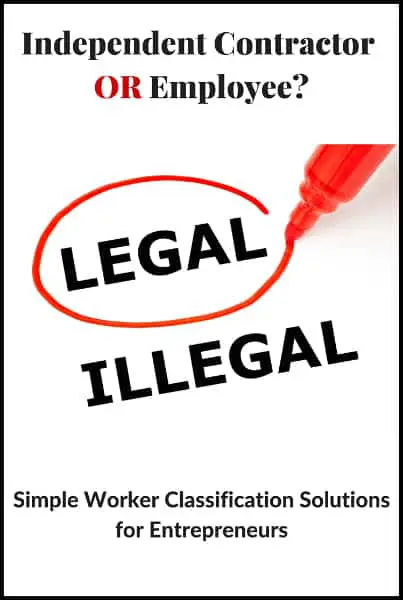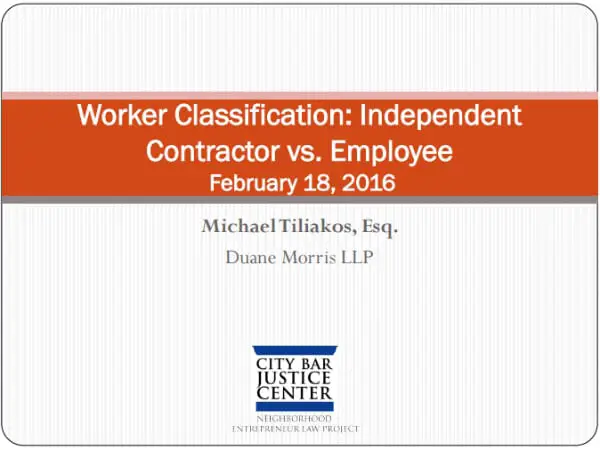
Over the year, I have hired various independent contractors to help with my blogging and web development work. (I’m not talking about my sons’ work!) As I make plans to outsource even more work in the future, it’s important to know the legalities of hiring. Are those that I hire employees or independent contractors? That is whey I attended a “Worker Classification” workshop last week. At the event, an employment lawyer named Michael Tiliaklos shared simple worker classification solutions for entrepreneurs.
Mr. Tiliakos shared a variety of helpful worker classification tips for employers including obligations to independent contractors, various worker classifications tests and the risks that come with the misclassification of workers. Neighborhood Entrepreneur Law Project was kind enough to send me a copy of the presentation/handout to share with you.
 You can get the pdf of the full presentation/handout by clicking “Worker Classification Presentation 2-18-16 MTiliakos”.
You can get the pdf of the full presentation/handout by clicking “Worker Classification Presentation 2-18-16 MTiliakos”.
I also want to share the main points that stood out to me from the presentation:
The Duck Test of Worker Classification
While there are many official worker classification tests, I liked Mr. Tiliakos’ simple “duck test”. You know – “If it walks like a duck and quacks like a duck, then it’s a duck!” In this scenario, if a worker works like an employee and is treated like an employee, then they are an employee. Most of us have been employees at some point so we know how employees are treated. We also understand the economic realities of an employer-employee relationship. If our hired workers are economically dependent on us (and not multiple clients) for their livelihood, then they are most likely employees.
Freedom and Control in Worker Classification
Freedom and control are big words when it comes to determining who is an independent contractor. Independent contractors are free from supervision, direction and control while performing their duties. The IRS in particular focuses on the “right to control” test. If the employer has the right to “direct and control” the worker’s means of achieving the desired results that they are hired to obtain then that person is an employee.
Worker Classification Enforcement
It’s important to get classifications right. If not, there are legal, financial and (in some cases) criminal penalties. There is also joint enforcement when it comes to the misclassification of workers including an overlap between federal and state level agencies.
With recent litigation against a variety of companies – especially “on demand” ones like Lyft, Homejoy and Uber – it is important that employers are on the side of the law when it comes to proper employee classification. It could be the difference between a booming business and having your startup shut down! Take these following articles as cautionary tales: Lyft Will Pay $12.25M To Settle Worker Classification Lawsuit In California; Uber Worker Classification: Another Case Is Filed; and Cleaning Startup Homejoy Shuts Down, Blames Worker Classification Lawsuits.
If you are in any doubt regarding the status of your workers, I strongly suggest that you get legal advice. If you need assistance with affording such help, there are many organizations that provide pro bono legal help. If you are in NYC, the City Bar Justice System offers the Neighborhood Entrepreneur Law Project. If you are in other locations, you can also do a search in Google or contact your local small business office for referrals.